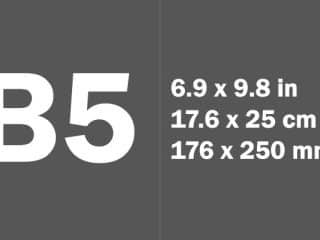Last Updated on October 7, 2022 by Carlos Alonso
Introduction
Businesses have invested hundreds of hours in understanding the marketing funnel and crafting the perfect method to get relevant audiences in the funnel. The marketing funnel helps businesses have an insight into online consumer behavior and what leads them to purchase.
Over the last decade, businesses have crafted linear and consistent marketing practices that have helped them provide their customers with an excellent online experience.
However, customers’ behavior changes as time goes by. That means teh same marketing practices will not help the marketers get their audiences into the marketing funnel. That’s where Search Intent comes to light.
According to many market experts, search intent has redefined the marketing funnel. Search intent refers to the query users search for on search engines. Generally, any search has four intentions – Emotional, navigational, transactional, and Commercial.
If this is the first time you are hearing something about search intent, it is advisable that you first understand What is SEO & How it Works. Only then will you be able to understand what search intent is all about.
What Is Search Intent?
Search Intent is the WHY behind any user’s search query. In other words, why did the person do this search? What was the reason behind the users using the exact word used to search for anything online?
The AI working behind the search engine algorithm goes through all the possibilities beyond any search query and tries to give results as relevant as possible.
How Is Search Intent Redefining Market Funnel?
Now that you know what search intent is all about, you must have an idea of how search intent will affect the SERP results. Businesses that want to rank on higher pages need to take the search intent into their consideration.
Many businesses take help from professionals to manage and understand marketing. But even those professionals need to be aware of what search intent is all about to get better results.
Businesses need to understand that the customer’s journey is evolving. The sales funnel was modeled with the sole purpose of converting customers. The whole process was linear and was only effective if eh customers were coming back again to do business.
However, this is no longer the case. Today, we have online channels that create different ways to target audiences. Google’s data shows that each customer has a unique journey. This uniqueness brings diversities that shatter the whole concept of having one funnel for multiple consumers.
A customer might start its journey at any point in the funnel and veer in and out of the traditional route. The customers’ demands are rising sky-high, and they want businesses to cater to their needs at a moment’s notice.
Throughout this journey, the customers switch in and out of the funnel. This process affects their buying decisions. And since no two people’s journey is the same, the customer’s journey becomes unique.
How To Use Search Intent Data?
When you know where your customers are in the marketing funnel, you have a better idea of what needs to be done to increase the chances of converting them.
Here is how you can use the search intent data for better results.
Understand The Search Queries
While we might be saying that search queries are the future of online searches. But, how do you understand the search intent of any search query? The answer is hidden in the pattern of the results. Different user queries can discover different trends and online behavior.
If you want to understand the search intent, you need to understand the patterns of the results. Considering the pattern, you can easily categorize the data into specific users interest. This categorization will help divide the main topic into different sub-division.
Analyze Ranking Based On Intent
Rather than just drafting theoretical reports on what you have done in your marketing campaign, you must draft reports on performance. This will give you an insight into how the marketing funnel is performing and the factors that are helping with the performance.
For instance, you are happy with how things are happening inside the marketing funnel. But after analyzing the funnel, you find a few areas which need to be more streamlined.
Improve Site Content
Is there any page on your website that needs to be ranked but it’s not performing? If yes, you might need to work on your site’s content. That being said, don’t just stick to writing new content. Concentrate on the old content that you already have on your website.
Yes, writing new content is important, but so does updating your old content. In fact, older content holds more potential to rank because of age and previous performance.
Learning To Anticipate Customer Intent
The secret to satisfying your customers is to anticipate what they need from you. Therefore, you need to learn to anticipate your customer’s intent.
For instance, for someone who is looking for information about leadership, it is most likely that they will take leadership classes. By understanding what they are looking for locally, you can offer them tailor-made content.
Once you know what your consumers are looking for, the only thing you need to ensure is offering them relevant content at the right time.
Your audiences signal their intent with every move they make on your website. Offering what your audiences are looking for is easy. The real challenge lies in anticipating what they want, even without any information.
With experience, you will be able to tell how the audiences will react based on the pages they visit and the information they go through.
Key Takeaway
The key to anticipating user intent is machine learning and artificial intelligence. With the combination of these two technologies, website owners can deliver the exact thing consumers are looking for.
In short, the traditional sales funnel that we know is becoming obsolete. Instead, understanding what the users and audience want is the key ingredient to a successful marketing campaign.
Businesses that can anticipate the true intent behind the searches can present meaningful information to the audiences and can cater to every user’s journey needs.
















